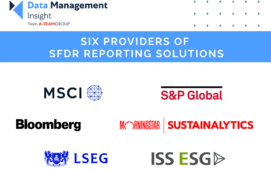We read the latest CESR advice on transaction reporting with alarm. In short, it suggested that the market had failed to find its own solution to the challenge of transaction reporting in a fragmented liquidity environment.
But has it?
Since the implementation of MiFID in 2007, the market has seen the launch of a specific, market-supported trade reporting service in the form of MarkitBoat – which, you’ll recall, was set up by a group of investment banks before it was offloaded to Markit. Market data vendors like Thomson Reuters and Bloomberg have introduced consolidated trade data services. And large banks and brokerages have used software from a variety of providers to build their own consolidated post- (and pre-) trade views.
Yet, CESR says: “Since MiFID implementation many data vendors have been delivering consolidated data. However these services are not of a standard that fully satisfies market participants.”
How so?
CESR elucidates thus: “A recurring theme in the analysis of why consolidated data is not being delivered to the market to the standard it needs is the inadequate quality and consistency of the raw data itself, the inconsistencies in the way in which firms report it for publication, and the lack of any formal requirements to publish data through bodies with responsibilities for monitoring the publication processes.”
Fair enough, but CESR goes on: “CESR and market participants generally agree there is a need for an affordable consolidation of post-trade information … “
Yes, in essence, consolidated data is available, but it does cost. And cost seems to be the crux of the issue here. The data is available if you want to pay for it.
In its advice paper, CESR makes recommendations on how to “ensure the quick development of a European consolidated tape for transparency information at a reasonable cost.” CESR is calling for the creation of so-called Approved Publication Arrangements (APAs), which could be an exchange, an MTF or some other entity.
Pre-MiFID, exchanges were in essence APAs. Will more of them boost post-trade transparency? We wonder.
Some have called for the market participants to address this specific sharpish, before the New Regulators come in and create a US-style consolidated tape. FIX Protocol Ltd. has been put forward as a body that could step in and fix things, no pun intended.
Subscribe to our newsletter




